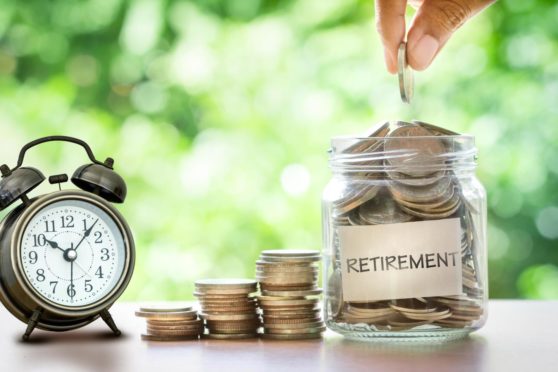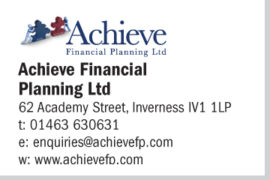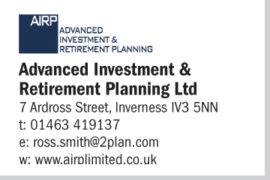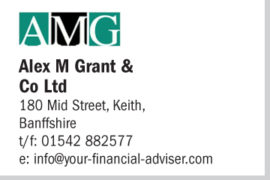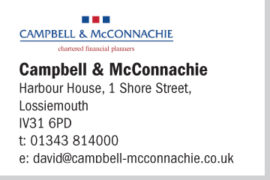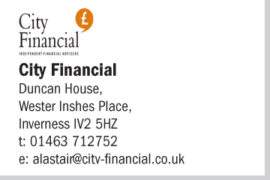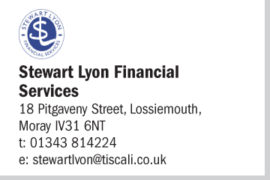INDEPENDENT FINANCIAL ADVICE ON MONEY MATTERS AROUND THE HIGHLANDS, ISLANDS & MORAY
When you decide to retire it can be very confusing working out the best way to draw your retirement income from your pension benefits you have built up.
It’s a major planning time so it’s a crucial time to seek quality financial advice.
Basically your income choices boil down to three options.
- Use your funds to buy a Secure income
- Use your funds to draw a Flexible income
- Take your pension benefits as a cash sum
1. SECURE INCOME
There are many types of secure income available – with lots of different features you can ‘bolt on’. These features are designed to offer extra peace of mind for you and your family after you retire.
However, it’s likely that any extra features you choose to add will reduce the starting level of your retirement income.
Take care of your loved ones
You can pass on a portion of your pensions income to your spouse, civil partner or other dependant(s) should they live longer than you do.
Keep pace with inflation
You can arrange for your pensions income to increase each year.
Extend your income beyond death
You can add a ‘guarantee period’ which means your income payments will continue to be paid for a set period of time – even if you die before then.
Get a bigger income if you’re in poor health
You may be offered a higher level of income if you have any health issues or habits which could shorten your life expectancy. This is called an ‘enhanced annuity’.
What else can I do with a secure income?
Take some tax-free cash
You can usually take up to a quarter of your pensions savings as a tax-free lump sum. You may be able to take more than this if you successfully applied to HM Revenue & Customs for a greater allowance.
If you want to take tax-free cash, this has to be taken before you buy a secure income. Tax rules depend on your individual circumstances and may change in the future.
What do I need to watch out for?
You can’t change your mind
Once you’ve used your pensions savings to buy a secure income, you can’t usually change your mind – even if your circumstances do. So it’s really important you get things right first time.
Adding extra features will lower your income
If you want to add any extra features, such as making sure your loved ones will get some of your income when you die, you should expect to be paid a smaller income.
Don’t lose out on any guarantees
If your plan has a ‘guaranteed annuity rate’ it means your provider will guarantee to pay you a minimum level of income for the rest of your life, in return for your pensions savings. This is a rare and potentially valuable feature, so it’s worth checking whether this applies to you.
Your entitlement to state benefits could be affected
The amount of income and/or tax-free cash you take from your pensions savings could affect your entitlement to means-tested state benefits, this includes such things as housing benefits and council tax reductions.
What happens when I die?
Unless you’ve chosen to pass on some of your income to your loved ones or set a ‘guarantee period’, your pensions income payments will stop when you die.
2. FLEXIBLE ACCESS
What can I do with flexible access?
Enjoy the income you need, when you need it
You can take cash withdrawals, set up regular income payments and make changes as often as you need to.
Take some tax-free cash
You can usually take up to a quarter of your pension savings as a tax-free lump sum. This can be paid in one lump sum, or spread out over a series of smaller cash payments.
Give your savings more time to grow
Whatever you leave in your plan will stay invested – meaning it still has potential to grow.
Change your mind whenever you like
If your needs change, you can use the pension savings you have left to buy a secure income – this will pay you a guaranteed, regular income for the rest of your life.
What do I need to watch out for?
You’re still exposed to investment risk
While your money stays invested, there are no guarantees it will grow. So if your investments perform poorly, you could get back less than you started with.
You could run out of money before you die
With flexible access, your income isn’t guaranteed to last forever. So if you take too much money, live longer than expected or if your investments don’t perform as well as you’d hoped, you could run out of money before you die.
You’ll need to actively review your plan
As with any flexible access arrangement, regular reviews are key. You’ll need to make sure the money you’re taking out is sustainable – and adjust things if there’s a risk your savings will run out too soon.
Saving into other pension plans could be restricted
When you start taking an income from a flexible access plan, the government puts a limit on how much you (and your employer) can save into other money purchase pension arrangements without a tax charge.
This is called the money purchase annual allowance –and it’s currently set at £4,000 a year.
Your entitlement to state benefits could be affected
The amount of income and/or tax-free cash you take from your pension savings could affect your entitlement to means-tested state benefits, this includes such things as housing benefits and council tax reductions.
You should remember that tax rules depend on your individual circumstances and may change in the future.
What happens when I die?
If you have money left in your plan when you die, it can be passed on to your loved ones – usually free of inheritance tax.
- If you die before age 75, your pension savings can normally be paid to your loved ones however they like, tax free.
- If you die aged 75 or older, your pension savings can be paid to your loved ones however they like, subject to tax.
3. Take the cash
This can be an option if you have smaller pots of pension provision, but you need to be very careful with the taxation.
When someone is considering retirement it becomes vital to engage with an independent financial adviser to ensure the decisions made are correct for the clients circumstances and objectives.
Seek professional advice from your local Independent Financial Adviser.
Click to visit their website:
Next month’s topic is on mortgages.
